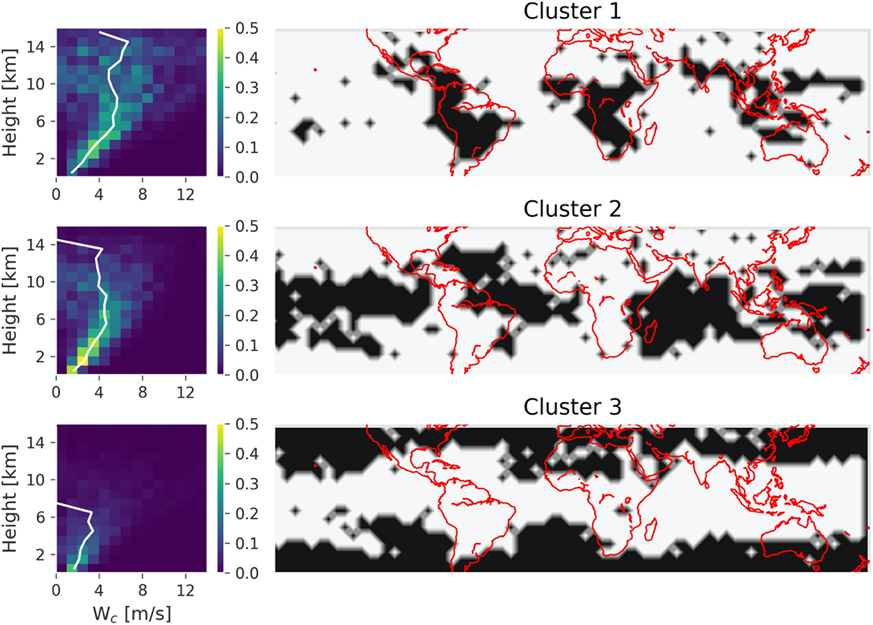Global distribution of convective vertical velocity and convective mass flux estimates
Submitter
Wang, Die — Brookhaven National Laboratory
Area of Research
Vertical Velocity
Journal Reference
Jeyaratnam J, Z Luo, S Giangrande, D Wang, and H Masunaga. 2020. "A Satellite‐Based Estimate of Convective Vertical Velocity and Convective Mass Flux: Global Survey and Comparison with Radar Wind Profiler Observations." Geophysical Research Letters, 48(1), e2020GL090675, 10.1029/2020GL090675.
Science

Figure 1. Centroids of the three k-means clusters in terms of height versus convective vertical velocity (wc) histograms. (Left) The pixel value refers to the frequency of occurrence for each height level and the white line shows the mean wc values. (Right) Geographical distribution of the clusters. Black indicates the cluster to which it is most strongly associated on a 0.5° × 0.5° grid. From journal.
Properly representing cumulus convection in global climate models (GCMs) has been a longstanding challenge. While convective vertical velocity and mass flux lie at the heart of most of the cumulus parameterizations used in GCMs, few observations or retrievals of these properties are available at the global scale. This study addresses this need by developing a robust global data set of these key parameters.
Impact
The study develops a novel, satellite‐based method for estimating global convective vertical velocity and mass flux that is validated using unique ground‐based radar wind profiler (RWP) observations. The new method enables understanding the regional and seasonal differences of convective properties to facilitate GCM evaluation and parameterization development.
Summary
We develop a multi-year, global estimate of convective vertical velocity (wc) and mass flux using a single-plume model and a combination of active and passive satellite data from the A‐Train constellation. These estimates are evaluated against collocated ground‐based RWP retrievals at the Atmospheric Radiative Measurement (ARM) sites. The comparison shows a solid agreement of the 95th percentile convective vertical velocity and mass flux profiles. A k‐means cluster is applied to this global, multi-year, satellite-based convective vertical velocity data set to assess the main features of its global distribution. Results show convective characteristics to be distinctly different among the extratropics, tropical land, and tropical ocean.
Keep up with the Atmospheric Observer
Updates on ARM news, events, and opportunities delivered to your inbox
ARM User Profile
ARM welcomes users from all institutions and nations. A free ARM user account is needed to access ARM data.


















